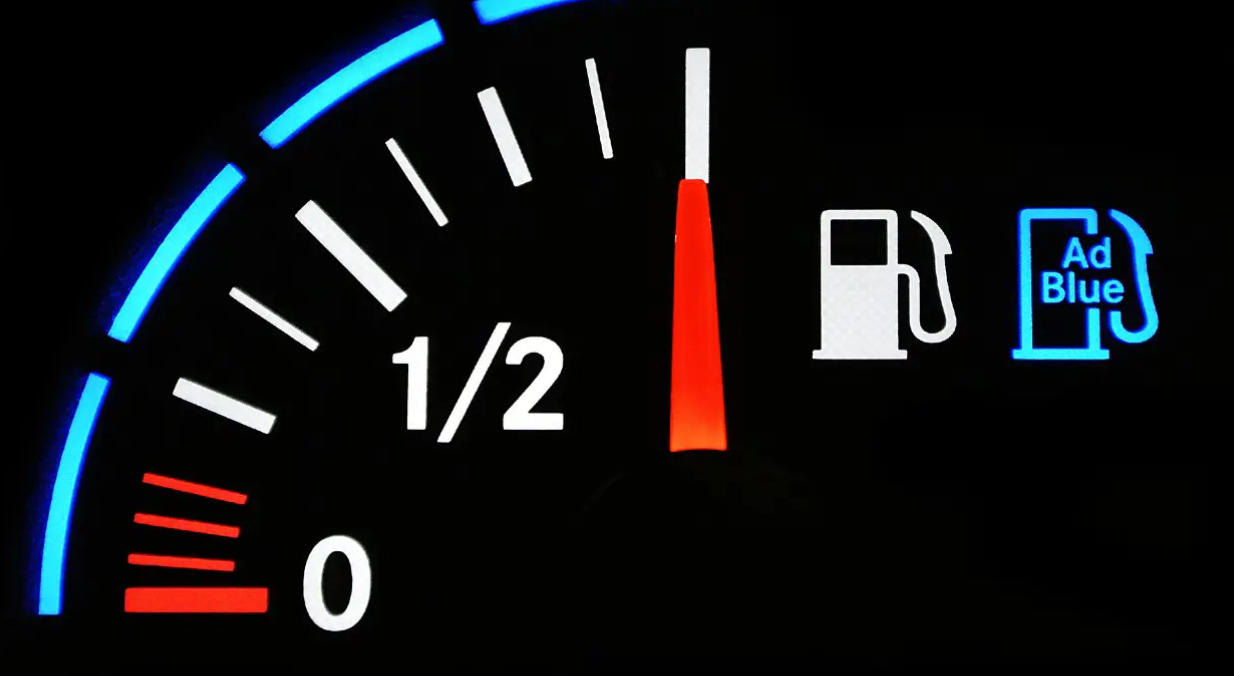What is AdBlue? Good question. You might have heard it’s a fuel additive and assumed it’s a fuel economy thing. It isn’t. You might even have heard it’s made from pig’s wee. It isn’t that, either. Phew. Imagine the smell. You might also have assumed it’s actually blue. A natural assumption to make, but… again, it isn’t.
So What Is AdBlue, Then?
It’s an exhaust fluid for diesel cars. AdBlue is a brand name for a liquid mixture of deionised water and carbamide, AKA urea, which is basically the main component of urine. Hence the idea that AdBlue is pig wee. Thankfully, AdBlue isn’t made by collecting pig or indeed human waste donations. It’s entirely man-made… man-made in the sense that it’s created in a lab, not man-made in the sense that… never mind. Anyway, it’s completely non-toxic and is made using high-grade urea and the purest of water.
Is AdBlue A Fuel Additive?
It is not. Although the AdBlue spout in a car is almost always next to the fuel spout under the filler flap (if not, check under the bonnet or consult your manual), AdBlue is held in a separate tank, usually under the boot floor. AdBlue never mixes with your diesel fuel.
Why Do Cars Use AdBlue?
AdBlue is an exhaust fluid that’s used to reduce harmful tailpipe emissions in cars, vans, buses and lorries powered by diesel; petrol-powered vehicles do not use AdBlue. AdBlue is designed to reduce harmful nitrogen oxides (NOx) produced by diesel engines. It neutralizes these emissions before they enter the atmosphere. NOx emissions are a nasty pollutant that contributes to human lung disease and deteriorating air quality.
How Does AdBlue Work?
It works using a process called ‘selective catalytic reduction’, in which a precisely regulated amount of AdBlue is sprayed into the exhaust gasses from a separate tank in your car. At high temperatures, AdBlue separates into ammonia and CO2, which reacts with the NOx in the exhaust system and turns it into nitrogen and water – both harmless.
AdBlue Seems To Be A Recent Thing In Cars. Why Is That?
AdBlue has been used in buses and HGVs for years now, but increasingly strict emissions regulations for cars and vans have made manufacturers add it to their passenger vehicles. The latest Euro 6 emissions standards, which apply to every new car produced from September 2014 onwards, require that far fewer NOx emissions leave the tailpipe of a diesel car. AdBlue is an effective way of lowering NOx emissions without adding too much cost and complexity to the vehicle.
How Do I Know If My Car Uses AdBlue?
If it’s a modern diesel (produced from 2014 or later), there’s a very good chance it uses AdBlue. An obvious giveaway is the blue-capped AdBlue spout under your fuel filler flap. If there isn’t one there but you still think your car uses AdBlue, check under the bonnet for a spout there, or consult your manual.
Will My Car Still Work If The AdBlue Runs Out?
Nope. Not properly, anyway. All cars with AdBlue have a sensor that alerts you when levels are low, giving ample time to refill. If you let the AdBlue tank run dry, your car enters limp mode, limiting speed and possibly disabling comfort features like air conditioning. Prolonged neglect of AdBlue levels may severely limit vehicle performance, causing inconvenience and requiring immediate refilling to restore normal operation. You won’t be able to turn the engine back on again until you’ve refilled the AdBlue tank. Usually, you’ll need at least 5 litres of the stuff before your car will start again.
Should I Go Out And Buy Some AdBlue Now Then?
There’s probably no need if you’ve not seen a warning light to tell you your AdBlue is running low. You’ll usually have more than 1000 miles left in your AdBlue tank when your warning light first comes on, so plenty of time. AdBlue use varies from car to car, but most cars have at least a 10-litre AdBlue tank and a litre of the stuff should last 500-600 miles. AdBlue is usually refilled during servicing, meaning you’ll likely never need to handle it yourself under normal circumstances.
But What If I Do Need To Top It Up – Where Do I Get It And How Much Does It Cost?
Most fuel stations sell bottles of AdBlue or you can get it online. Like fuel, many AdBlue brands exist, but any brand works as long as it complies with the required ISO standard. Specifically, look for a code starting ‘ISO 22241’ on the bottle. This guarantees it meets quality and safety standards, and therefore won’t damage your SCR catalyst. A pricey repair.
Expect to pay somewhere between £1 and £1.50 per litre of AdBlue, which tends to be sold in bottles of 5 or 10 litres. You’ll pay a little more to have your dealer do it. AdBlue pumps are available at some filling stations, but they’re usually located in the HGV lane at service areas.
If I Don’t Use My Car Very Often, Can The AdBlue Go Bad?
Not really, no. Good quality ISO-standard AdBlue is chemically pure and can remain in your tank for an extended period without issues. Unless you’re planning on declaring your car SORN for years (off the road, that is), you needn’t worry about your AdBlue going stale.
I’ve Heard That AdBlue Can Impact the Fuel Economy, Is That True?
Honestly, it’s a bit of an unknown, but it’s more than likely not the case. Because modern diesel engines are designed to run with AdBlue, it’s difficult to say how the technology is impacting efficiency. Diesel engines are becoming more efficient and cleaner overall, so the need for AdBlue isn’t a major concern anymore.
Read other Articles: The rise in exhaust gas emission tests related to air pollution, Adblue has advantages for Euro 5 vehicles
Source: https://www.vanarama.com/guides/cars/what-is-adblue-heres-everything-you-need-to-know





